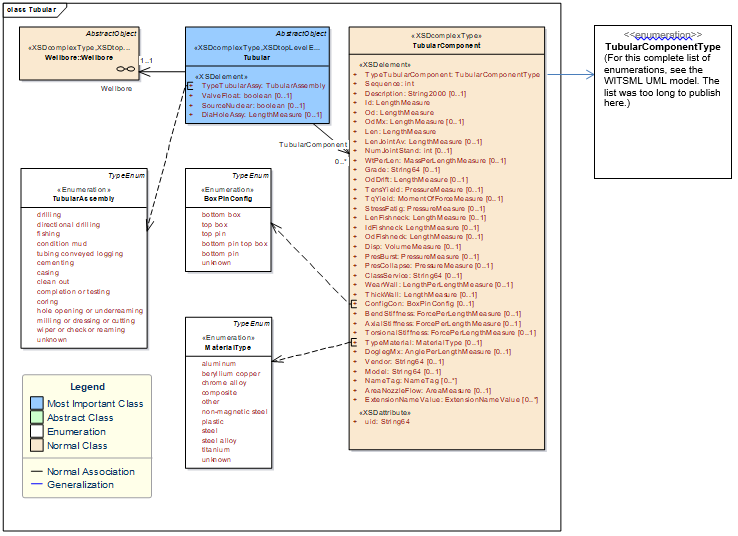7.2.1.1 Tubular Object Overview
| Topic Version | 1 | Published | 11/11/2016 | |
| For Standard | WITSML v2.0 | |||
Drill sites normally collect information regarding any tubular that the well site works with. This information is then put together in a tally as the tubular is constructed, as it is going into the wellbore. The tubular object (Figure 7.2.1.1-1) is a way to transmit this collected tubular information. Typically, a separate tubular document is created for each configuration of the drill sting. This is not dependent on the standard of a run, but dependency resides on the design of the components of the string. An example of a non-run dependency tubular string is when casing is run. The first tubular document created contains the casing, inner string, and landing string components. However, when the casing tubular components are detached from the tubular string, a second tubular object is created and that document only contains the inner string and landing string tubular information.
Tubular object references to other objects to enable workflows are common. Reference to the wellbore geometry object is common because it allows consumers of data to know what tubulars were in a particular configuration of the wellbore design. The BHA run object can also reference the tubular object for consumers to link BHA run statistics to particular tubular configurations.
